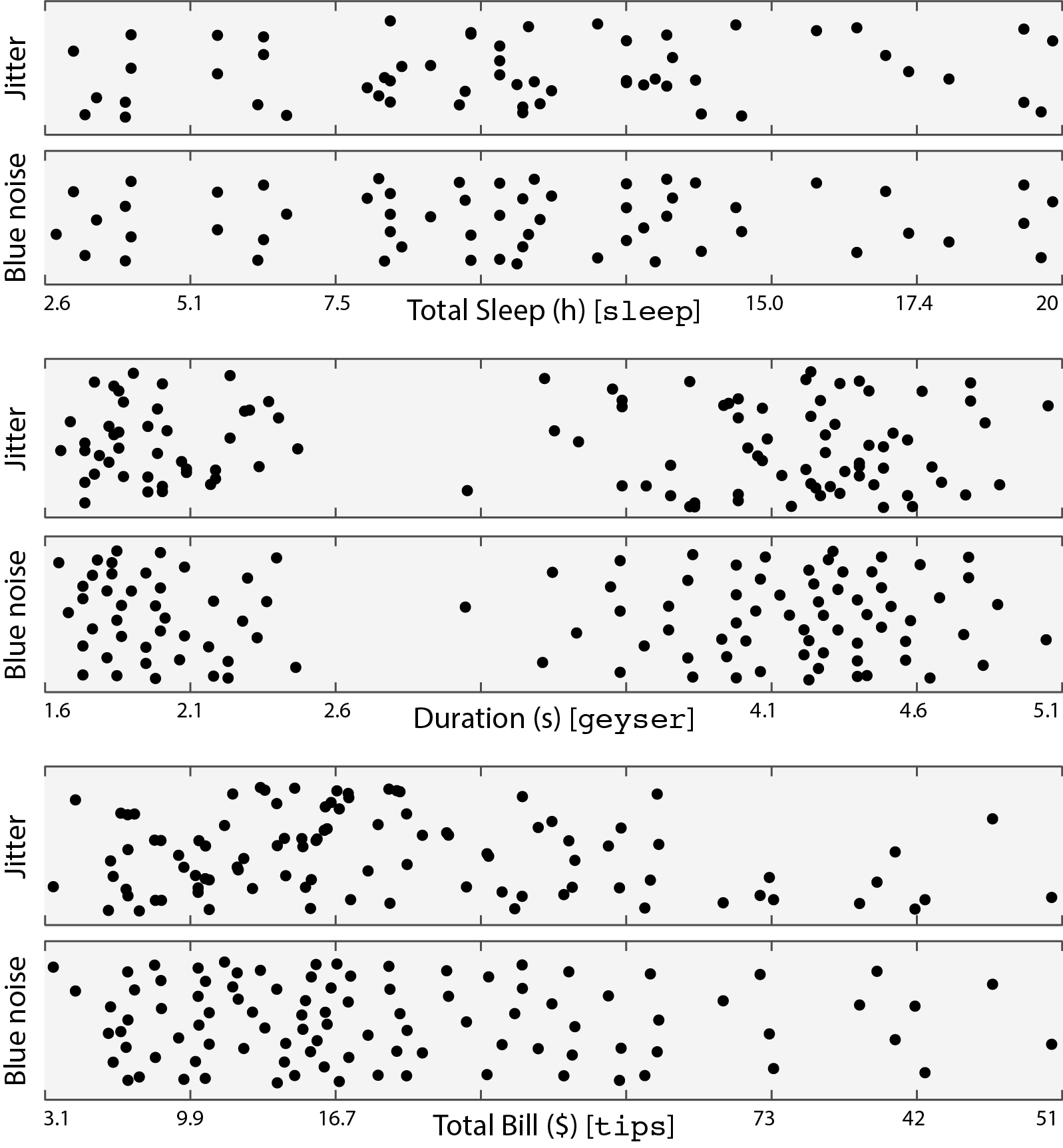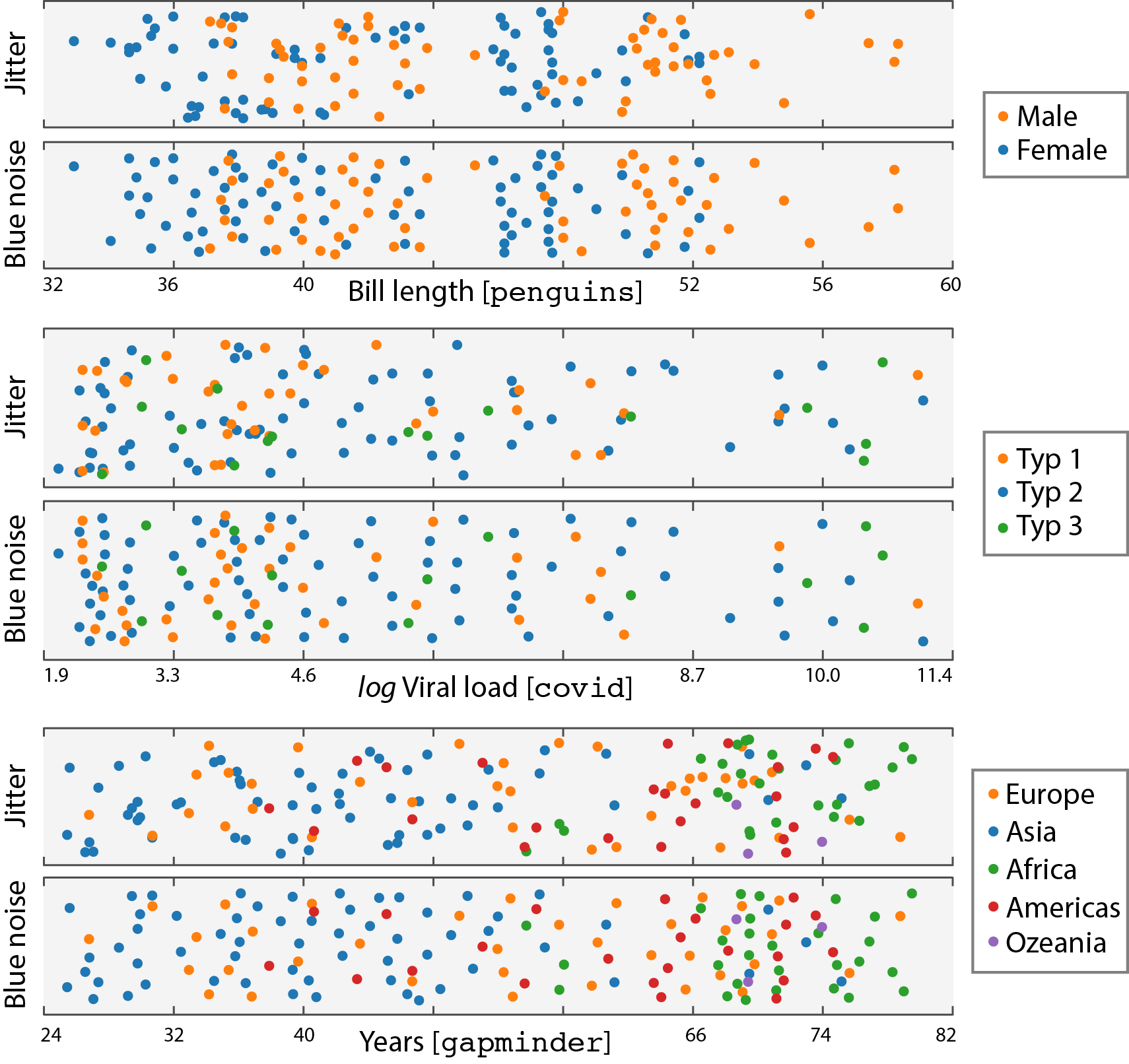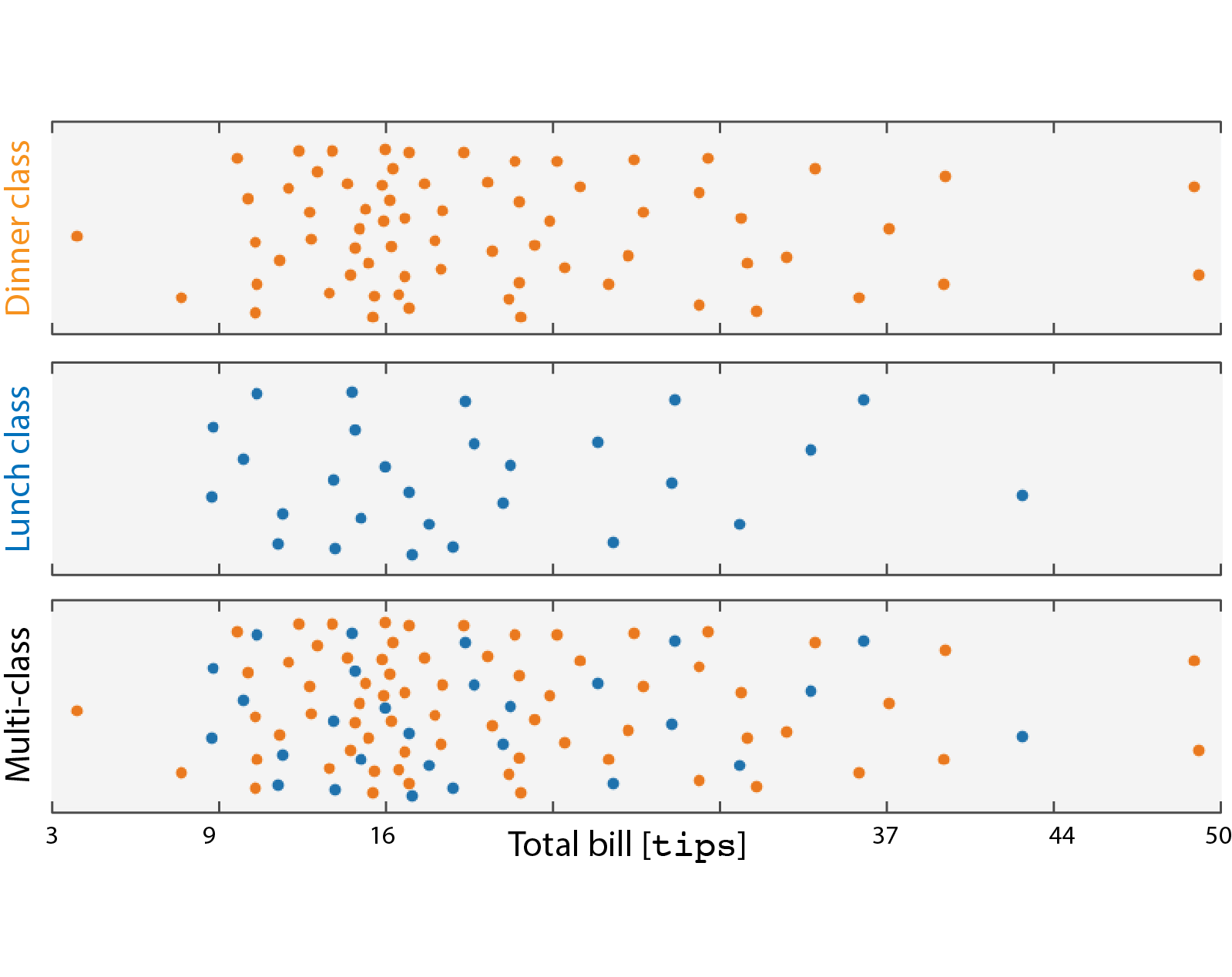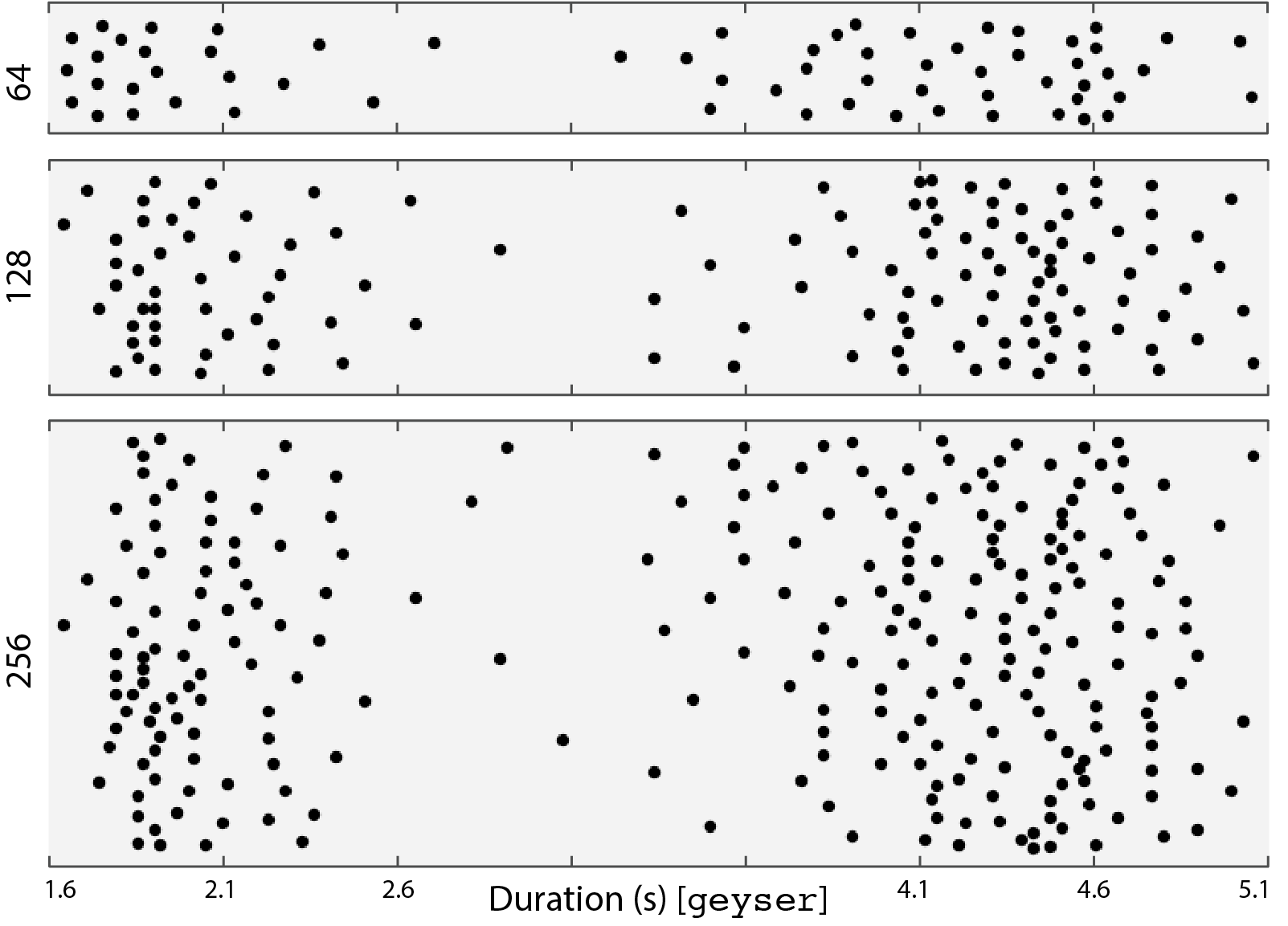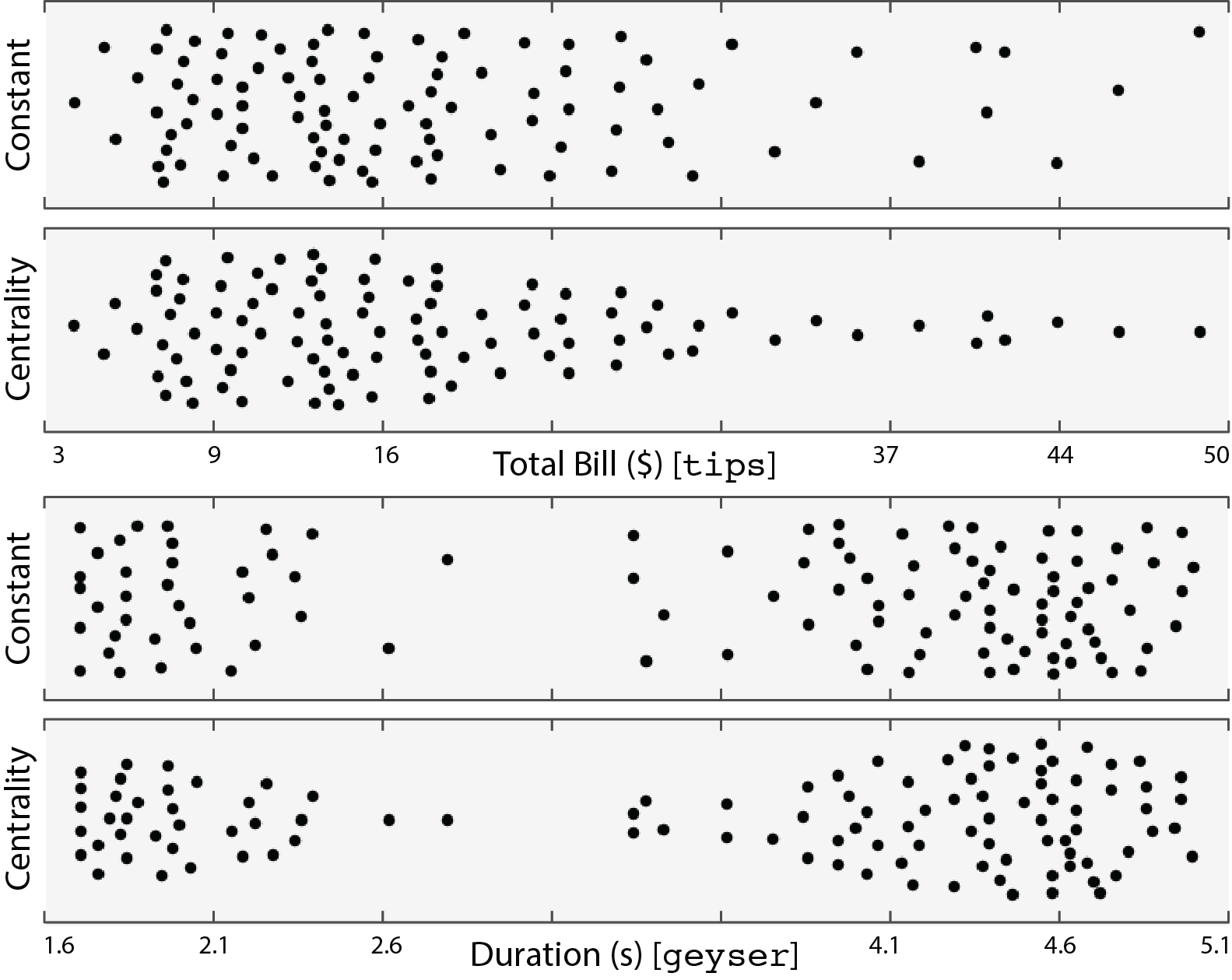Blue Noise Plots
Computer Graphics Forum (Proc. of Annual Conference of the European Association for Computer Graphics) 2021
Abstract
We propose Blue Noise Plots, two-dimensional dot plots that depict data points of univariate data sets. While often one-dimensional strip plots are used to depict such data, one of their main problems is visual clutter which results from overlap. To reduce this overlap, jitter plots were introduced, whereby an additional, non-encoding plot dimension is introduced, along which the data point representing dots are randomly perturbed. Unfortunately, this randomness can suggest non-existent clusters, and often leads to visually unappealing plots, in which overlap might still occur. To overcome these shortcomings, we introduce BlueNoise Plots where random jitter along the non-encoding plot dimension is replaced by optimizing all dots to keep a minimum distance in 2D i. e., Blue Noise. We evaluate the effectiveness as well as the aesthetics of Blue Noise Plots through both, a quantitative and a qualitative user study.
BibTeX
@article{vanOnzenoodt2021blue,
title={Blue Noise Plots},
author={van Onzenoodt, Christian and Singh, Gurprit and Ropinski, Timo and Ritschel, Tobias},
year={2021},
journal={Computer Graphics Forum (Proc. of Annual Conference of the European Association for Computer Graphics (2021))},
volume={40},
issue={2},
doi={10.1111/cgf.142644}
}
Figures
